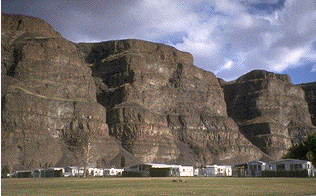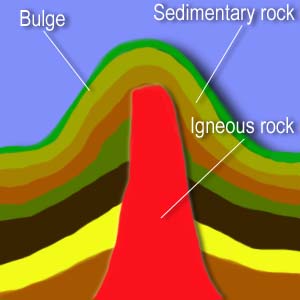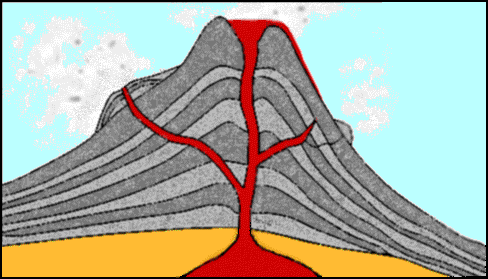Category: Landforms
VOLCANIC LANDFORMS
TYPES- ACID LAVA VOLCANO
TYPES- C0MPOSITE VOLCANO
The types of volcano features
Vulcanism
Vent – when the magma from the earth’s mantle reaches the surface through.
Lava– when the magma reaches the earth’s surface becoming a lava.
Pipe– a passage way in the volcano where the lava continues to rise through
Crater– an opening where the lava is ejected at the top of volcano.
Caldera– when the explosion of volcano and crater is destroyed.
Crater lake– when caldera is filled up with water.
VOLCANO FEATURES
VOLCANIC ERUPTION
When the volcano erupts, the magma from the earth’s interior is ejected to the surface forming a lava. The lava then ejected up into the air with explosive force. This lava cools and solidifies forming small fragments such as cinder and volcanic ash. Gases such as steam. carbon dioxide and sulphur dioxide are also given off.
VOLCANO
FAULTING
Faulting
When enormous stresses build and push large intact rock masses beyond their yield limit, faulting of the surface is likely to occur. A fault is a fracture along which movement occurs. The plane that extends into the earth and along which slippage occurs is called the fault plane. The fault dip is the angle from horizontal that the fault plane makes. The map direction that the fault takes is called the strike, measured east or west of true north. Generally, two walls are distinguished, the footwall and hanging wall. The hanging wall moves horizontally, vertically, or in both directions relative to the footwall. We identify the hanging and foot walls relative to the fault plane. The hanging wall is above the fault plane while the foot wall is below. The steep face of an exposed block is called the fault scarp. The fault line is the trace of the fault along the surface.











You must be logged in to post a comment.